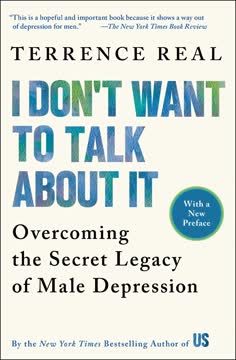Key Takeaways
1. Recognize the signs of narcissistic and emotional abuse
Emotional abuse is any coercive and threatening behavior or action used to control or manipulate how another will think or behave.
Common signs of abuse: Narcissistic and emotional abuse can be subtle and hard to recognize. Key indicators include:
- Hypercriticism and constant put-downs
- Humiliation and ridicule
- Refusing to communicate (silent treatment)
- Sarcasm and provocation
- Withholding affection
- Excessive jealousy and control
- Isolation from friends and family
- Gaslighting (making you question your reality)
Impact on victims: Abuse erodes self-esteem and creates confusion. Victims often feel like they're "walking on eggshells" and can't do anything right. The abuser may alternate between charm and cruelty, leaving the victim disoriented and doubting their perceptions.
2. Understand the impact of abuse on victims' self-esteem and identity
Sadly, narcissistic victim syndrome is real and it is debilitating, partly because of the abuse that precedes the syndrome and partly because of the lack of support and effective help for victims.
Loss of self: Prolonged abuse can lead to a profound loss of identity. Victims may experience:
- Cognitive dissonance (holding conflicting beliefs)
- Brain fog and difficulty making decisions
- Physical symptoms like fatigue, anxiety, and depression
- Feeling small, insignificant, and worthless
Trauma bonding: Victims often develop a strong emotional attachment to their abuser, making it difficult to leave. This occurs through a cycle of abuse and intermittent reward, creating a powerful addiction-like bond.
3. Break free from the cycle of abuse and codependency
Codependency—seeing a weakness in another and ignoring it, thereby enabling and reinforcing it.
Recognize codependency: Codependent behaviors include:
- Ignoring or minimizing abuse
- Enabling harmful behavior
- Putting the abuser's needs before your own
- Losing yourself in the relationship
Steps to break free:
- Acknowledge the abuse and its impact on you
- Set firm boundaries and stick to them
- Focus on self-care and rebuilding your identity
- Seek support from trusted friends, family, or professionals
- Consider separation or ending the relationship if necessary
4. Confront the truth about your relationship and yourself
You will know the truth, and the truth will set you free.
Face reality: Denial keeps you stuck. Confront these truths:
- Your partner's abusive behavior is not your fault
- You cannot change your partner; only they can choose to change
- You deserve respect and healthy love
Self-reflection: Examine your own beliefs and behaviors:
- What kept you in the abusive relationship?
- What are your core values and needs?
- What changes do you need to make in your life?
Confronting these truths can be painful but is essential for healing and growth.
5. Set and maintain healthy boundaries to protect your dignity
Boundaries are what separate you from me. They are like fences that set you and what is important to you apart from me and what is important to me.
Establish clear boundaries:
- Define your values and non-negotiables
- Communicate your boundaries clearly and firmly
- Enforce consequences when boundaries are violated
Types of boundaries to consider:
- Emotional (how you allow others to treat you)
- Physical (personal space, touch)
- Time and energy (how you spend your resources)
- Material (possessions, money)
Remember, healthy boundaries are not about controlling others but about taking responsibility for your own well-being.
6. Seek support and professional help for healing
You cannot travel this path alone.
Build a support network:
- Join support groups for abuse survivors
- Confide in trusted friends and family
- Seek spiritual guidance if applicable
Professional help: Consider therapy with a professional experienced in narcissistic abuse recovery. They can provide:
- Validation of your experiences
- Tools for healing and setting boundaries
- Strategies for rebuilding self-esteem
- Treatment for trauma and PTSD symptoms
Remember, healing is a journey, not a destination. Be patient with yourself and celebrate small victories along the way.
7. Rediscover your godly self and reclaim your life
God defines me.
Reconnect with your identity: Abuse can make you lose sight of who you are. Rediscover yourself by:
- Exploring your passions and interests
- Setting personal goals unrelated to your abuser
- Practicing self-compassion and positive self-talk
- Reconnecting with your spiritual beliefs if applicable
Create a new narrative: You are not defined by the abuse you've experienced. Focus on writing a new chapter in your life story, one of strength, resilience, and self-love. Remember that you are worthy of respect, kindness, and healthy relationships.
Last updated:
Review Summary
When Loving Him Is Hurting You receives mostly positive reviews, with readers praising its insights on narcissism and emotional abuse. Many find it helpful for understanding and dealing with toxic relationships. The book's Christian perspective is appreciated by some but criticized by others who find the religious content excessive. Readers value the practical advice, boundary-setting strategies, and empowering message. Some criticize the writing style as dry or boring. Overall, the book is seen as eye-opening and potentially life-changing for those in abusive relationships, though opinions vary on its effectiveness and approach.
Similar Books










Download PDF
Download EPUB
.epub digital book format is ideal for reading ebooks on phones, tablets, and e-readers.






